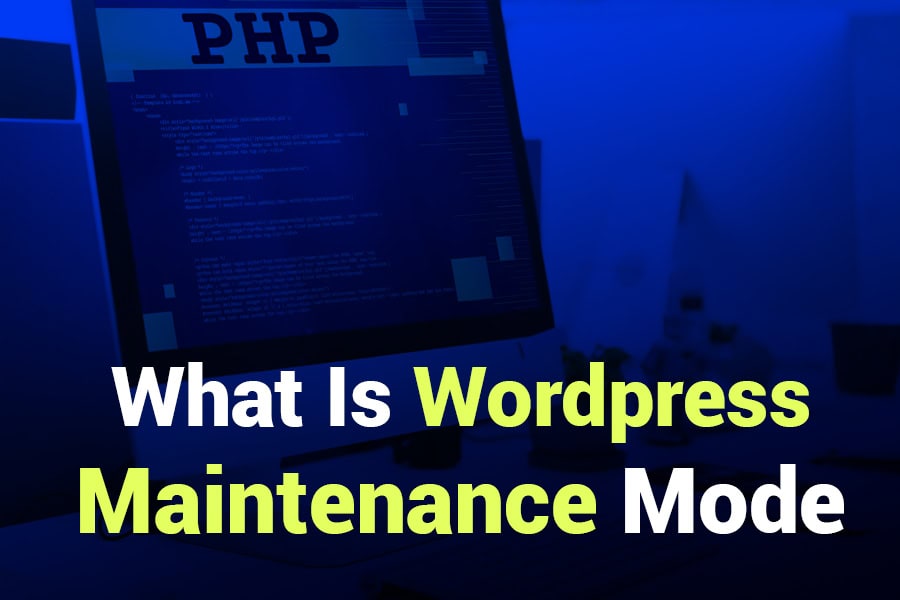What is WordPress Maintenance Mode? Everything You Need to Know

If you run a WordPress website, you may need to perform updates, fix issues, or redesign sections of your site. However, making these changes on a live site can disrupt user experience and create a negative impression. This is where WordPress maintenance mode becomes essential. It allows you to put your website in a temporary offline state while you perform critical updates. Instead of displaying a broken or incomplete page to visitors, WordPress maintenance mode shows a customized message, letting users know that the site is undergoing improvements.
Using maintenance mode ensures a smooth experience for both administrators and visitors. Whether you’re updating plugins, changing themes, or fixing bugs, enabling maintenance mode prevents disruptions and enhances professionalism. In this guide, we’ll explore what is WordPress maintenance mode, its benefits, how to activate it, and the best plugins available. You’ll also learn how to customize your maintenance page and troubleshoot common issues effectively.
What is WordPress maintenance mode?
WordPress maintenance mode is a feature that allows website owners to temporarily disable public access while performing updates, troubleshooting, or redesigning their site. When activated, it displays a message to visitors informing them that the site is undergoing maintenance. This prevents users from encountering broken pages, ensuring a professional experience. You can enable maintenance mode manually through WordPress settings, plugins, or custom coding, and customize it to match your branding. It is especially useful when updating themes, plugins, or fixing errors without affecting user experience.
Why is WordPress Maintenance Mode Important?
WordPress maintenance mode is an essential feature that helps website owners manage updates without disrupting user experience. When making changes to a website, such as updating themes, plugins, or content, users may encounter broken pages or incomplete functionality. By enabling maintenance mode, you prevent visitors from seeing an unfinished or malfunctioning website, ensuring they only access the site when it is fully functional. Instead of being met with confusing errors or missing elements, users receive a clear message that the website is undergoing updates and will return soon with improvements.
Beyond usability, maintenance mode also plays a vital role in website security. When updates are applied, especially security patches or plugin modifications, leaving a partially updated site online can create vulnerabilities that hackers can exploit. Temporarily disabling access during maintenance protects sensitive data and ensures that all updates are fully implemented before going live.
Additionally, search engines regularly crawl websites, and if they index broken pages during an update, it can negatively impact your SEO rankings. By enabling maintenance mode and displaying a custom message with a 503 Service Unavailable status code, you inform search engines that your downtime is temporary. This prevents search engines from penalizing your site, maintaining its search ranking while updates are completed.
How to Enable WordPress Maintenance Mode
Using Built-in WordPress Maintenance Mode
WordPress has a built-in maintenance mode that automatically activates when updates to plugins, themes, or the core system are being processed. During this time, visitors will see a simple message indicating that the website is temporarily unavailable. However, this default maintenance mode has limited functionality and does not allow customization. If you want to display a branded message, add a countdown timer, or enhance the user experience, you will need to use plugins or custom coding.
Using Plugins for Maintenance Mode
WordPress plugins offer an easy way to activate and personalize maintenance mode without requiring any coding skills. There are several feature-rich plugins available that allow users to create visually appealing maintenance pages with custom branding, social media links, and countdown timers. Some of the most popular plugins include SeedProd, which provides a drag-and-drop builder for complete customization, WP Maintenance Mode, which offers flexible settings for controlling user access, and Coming Soon Page & Maintenance Mode, which helps website owners design maintenance pages that match their site’s branding. These plugins provide a seamless way to inform visitors that maintenance is in progress while keeping them engaged.
Manually Enabling Maintenance Mode
For those with coding knowledge, manually enabling maintenance mode provides greater control over its appearance and functionality. By adding a custom function to the functions.php file, administrators can display a personalized message when the site is under maintenance. A simple PHP snippet can restrict access to visitors while allowing logged-in administrators to continue working. This method ensures flexibility but requires careful implementation to prevent potential errors in site accessibility.
Best Plugins for WordPress Maintenance Mode
- SeedProd – A feature-rich plugin allowing full customization of maintenance pages, including branding and countdown timers.
- WP Maintenance Mode – A free and effective tool that offers user role control and social media integration.
- Elementor Maintenance Mode – Ideal for Elementor users, enabling drag-and-drop page customization.
- Coming Soon & Maintenance Mode by SeedProd – Helps create attractive coming soon and maintenance mode pages with ease.
- Under Construction Page – A simple yet powerful plugin with a variety of pre-designed templates for quick setup.
Troubleshooting Common Issues with WordPress Maintenance Mode
Even though maintenance mode is a useful feature, users may encounter occasional issues that prevent it from functioning as expected. Below are common problems and their solutions to ensure a smooth maintenance experience.
- Stuck in Maintenance Mode
If your website remains in maintenance mode even after completing updates, it is likely due to the .maintenance file still being present in the root directory. To resolve this, access your site’s files via FTP or your hosting file manager, locate the .maintenance file in the root folder, and delete it. This will immediately restore normal site access.
- Page Not Displaying Correctly
Sometimes, after enabling maintenance mode, the maintenance page may not display properly, or visitors may still see the old content. This issue is often caused by cached data. Clear your browser cache, as well as your website’s caching plugin if you have one installed. If the problem persists, temporarily disable any caching-related plugins and re-enable them after confirming the maintenance page works correctly.
- Users Still Accessing the Site
If some visitors can still access your website despite enabling maintenance mode, check your plugin’s settings. Many maintenance mode plugins allow you to control user access based on roles. Ensure that restrictions are correctly applied to prevent unauthorized users from viewing the live site.
- SEO Impact of Maintenance Mode
Search engines may crawl your site while it is in maintenance mode, which could affect rankings if they detect downtime. To prevent SEO issues, use proper meta tags and return a 503 Service Unavailable status code, which informs search engines that the downtime is temporary and they should check back later.
In Closing
Understanding what is WordPress maintenance mode is essential for website owners who want to maintain a professional and user-friendly experience. Whether you are updating themes, troubleshooting errors, or implementing security patches, activating maintenance mode prevents visitors from encountering broken pages or incomplete features. This temporary downtime ensures that your website remains fully functional when it goes live again.
There are multiple ways to enable and customize maintenance mode, including built-in WordPress features, plugins, and manual coding. Each method provides varying levels of control and customization, allowing you to display a tailored message to visitors while the site is under maintenance.
By following best practices and resolving common maintenance mode issues, you can ensure minimal disruption to your audience. Additionally, using proper settings—such as applying a 503 Service Unavailable status code—prevents search engines from negatively affecting your SEO rankings. A well-implemented maintenance mode strategy helps keep your website running smoothly while maintaining trust with both users and search engines.
FAQ’s
Q. Can visitors bypass WordPress maintenance mode?
A. By default, visitors cannot access your site when maintenance mode is enabled. However, administrators can log in and continue working.
Q. Does WordPress maintenance mode affect SEO?
A. If maintenance mode is temporary, it has minimal impact. Using a proper HTTP status code (503) signals search engines that the downtime is intentional.
Q. How long should a site stay in maintenance mode?
A. A site should ideally remain in maintenance mode only as long as necessary to complete updates. Extended downtime can frustrate users.
Q. Can I schedule maintenance mode activation?
A. Yes! Some plugins allow you to schedule maintenance mode to activate and deactivate at specific times automatically.
Q. What happens if I forget to disable maintenance mode?
A. If maintenance mode is left enabled, your site will remain inaccessible to visitors. Always double-check and deactivate it once maintenance is complete.
